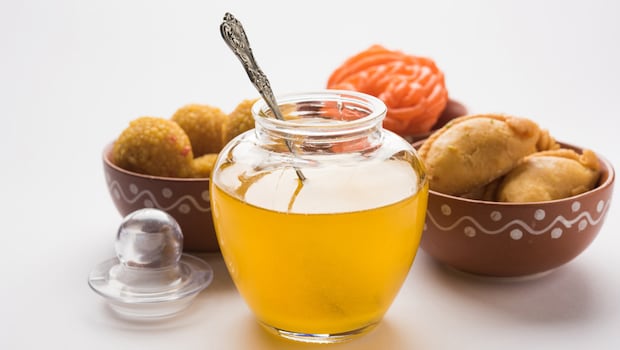Punjab Police and the Health Department recently busted a counterfeit desi ghee factory in Moga's Baghapurana town. According to officials, the factory was producing large quantities of fake ghee by mixing refined and vegetable oils with synthetic essences. They also found packaging rolls of popular ghee brands, which were used to label the fake ghee. The counterfeit product was then supplied to local retailers and sweet shops across Moga and nearby areas.
Also Read: Human Teeth Found In Chinese Sausages, Dim Sum, Spark Concern Over Food Safety
Police have arrested four individuals in connection with the racket, reported The Tribune. The accused had been operating in the region for a while, supplying adulterated ghee to local retailers. Authorities are now investigating the supply chain to identify traders and shopkeepers involved. Police plan to take further legal action under the Food Safety and Standards Act. Health department teams have also sent samples for lab testing to determine the exact composition and potential harm of the adulterated product.
How Is Fake Desi Ghee Made?
The production begins with refined oils such as palm, soybean, or vanaspati, which are melted and thickened with hydrogenated fats. To give it a natural appearance and aroma, shortcuts are taken by adding a dose of yellow colouring to achieve the sunlit glow and a few drops of synthetic fragrance that replicate the nutty and toasted scent of ghee. Additionally, substances like paraffin wax or starch may be incorporated to enhance the texture and provide "body" to the final product.

The result is a remarkably convincing fake that closely mimics the appearance and aroma of ghee. However, this artificial product poses serious health risks, including clogged arteries, high cholesterol and liver damage. On the other hand, traditional desi ghee is made by simmering milk butter to caramelise the solids, giving it a rich flavour and nutritional benefits that support digestion and heart health. The artificially made version lacks these benefits and carries only health risks.
How To Spot Fake Ghee
- Smell: To spot fake ghee by smell, identify its aroma. Pure ghee has a gentle, nutty, and rich smell, while adulterated ghee may have an artificial, overly sweet, chemical, or bland odour.
- Touch: A simple touch test can help determine if ghee is pure or fake. Pure ghee feels grainy and melts on your fingers. Fake ghee feels slick, oily and uniform.
- Heat: After heating, pure ghee melts clear and clean. On the other hand, adulterated ghee foams or leaves a sticky residue on the surface.
- Chill: Real ghee hardens evenly and softens at room temperature when refrigerated. Fake ghee stays semi-solid and greasy.
- Price: Fake ghee can often be spotted by a suspiciously low price. Pure ghee typically costs significantly more than adulterated versions.
Also Read: Watch: Woman's Innovative Recipe Combines Dubai Chocolate With Gajar Halwa




